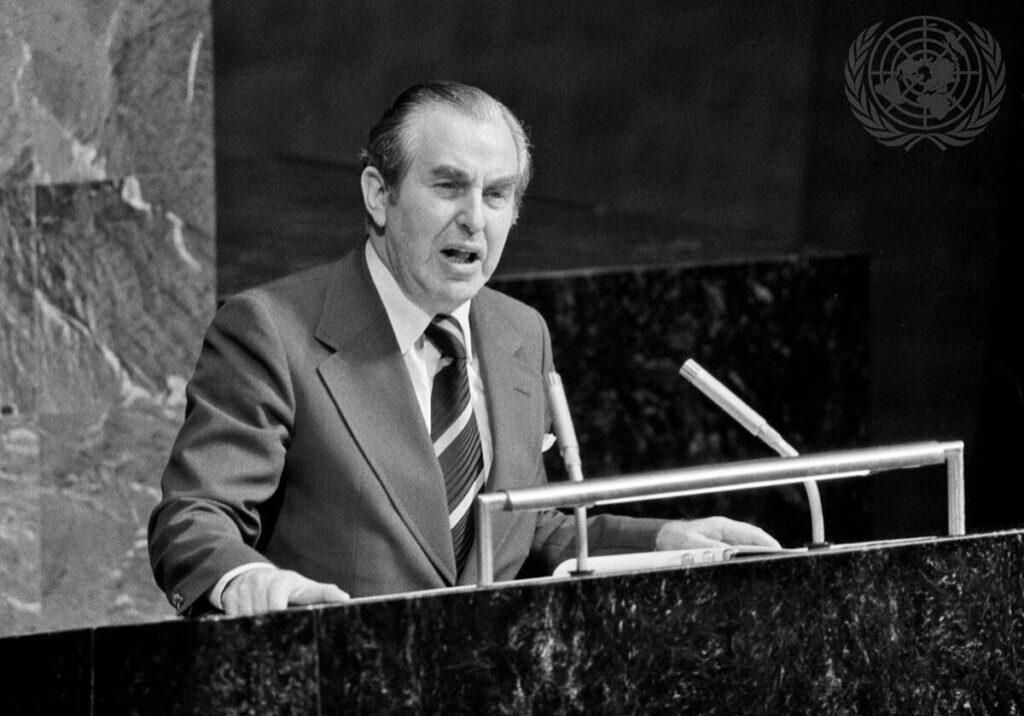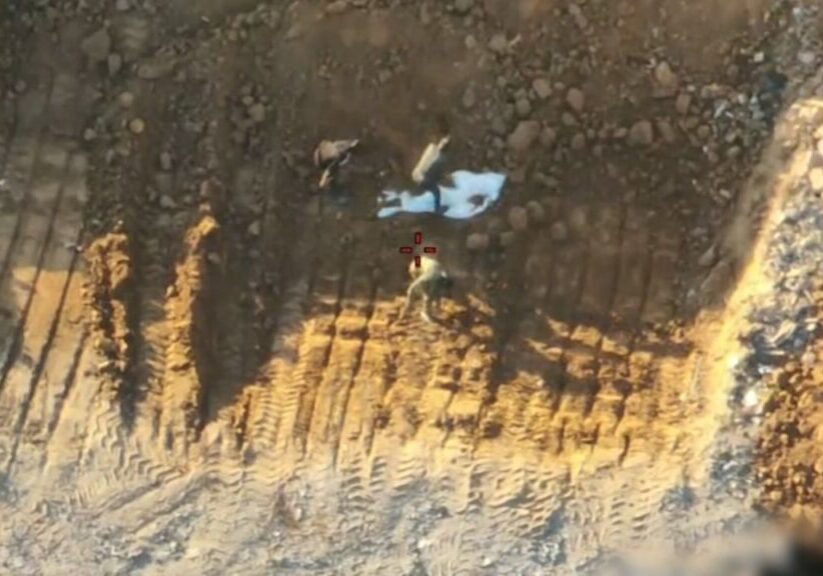Australia/Israel Review
A Weighty Week in Washington
May 31, 2011 | Amotz Asa-El

Amotz Asa-El
Half-a-year after Tunisian street vendor Mohammed Bouazizi set himself on fire and touched off a trans-continental chain reaction of riots, revolutions, crackdowns and civil wars, a shaken Middle East’s unpredictable future is at the heart of a sometimes acrimonious debate between the leaders of Israel and the US.
The more time elapses the more the political plots thicken across the Arab world. Even the little that once seemed straightforward is no longer clear.
In Tunisia, the chairman of the elections committee said the election for a national assembly planned for July, which many hoped would touch off the Arab world’s democratisation process, might have to be delayed by three months.
In Egypt, the so-called “Facebook generation” that played a key role in the mass rallies that resulted in Hosni Mubarak’s departure has pretty much vanished, leaving the religiously fervent and well organised Muslim Brotherhood as the front runner in the parliamentary election scheduled for September. Though current assessments are that the prospective Islamist victory will fall short of a majority, hopes that Egyptian history was marching into a new liberal democratic era may soon be proven premature, if not altogether unfounded.
In Libya, what initially seemed like a democratic revolt now seems more like a tribal war, and the hoped for swift removal of Gaddafi with NATO assistance has instead bogged down into a bloody stalemate. Two months on, Gaddafi is badly bruised militarily, but hanging on politically, and is actually successfully stinging Europe by encouraging migratory pressures on its shores.
Meanwhile, out in the Persian Gulf, the violence in Bahrain that was originally understood in the West as a popular call for freedom, looks today more like a Shi’ite majority’s Iranian-backed rebellion against the country’s longtime rule by a Sunni minority. The island’s consequent invasion by Saudi troops has effectively turned it into a Saudi-Iranian boxing ring where democracy is not a contestant. On the other side of the Arabian Peninsula in Yemen, President Ali Abdullah Saleh, apparently buoyed by rioters’ failure to unseat several other embattled Arab leaders, has reneged on his agreement to leave office peacefully.
Then there is Syria, where the threat to the Alawite minority’s 42-year rule seems to only feed the resolve and brutality with which the Assad family is unleashing the army against the people. The growing expert opinion that the Assad era may be drawing to a close only adds to the sense of uncertainty across the region.
In sum, the Middle East’s future has not been more unpredictable since the Ottoman Empire’s dissolution nearly a century ago.
The Israeli view of all this, from all political quarters, is generally pessimistic. The upheaval has produced no Arab Mikhail Gorbachev, who would inspire transition from above, nor a local version of Vaclav Havel or Lech Walesa who would spark it from below, observed Hebrew University’s Prof. Shlomo Avineri, Israel’s leading political scientist. And Yuval Diskin, outgoing head of the Shin Bet internal security agency, said he expects events in Syria, whichever way they turn, to involve a bloodbath.
In all, few in Israel see the Middle East democratising anytime soon. Worse, there is a growing suspicion that the Arab world will emerge from the current mayhem more fundamentalist, less peaceful, and less interested in free trade and a free market.
This alone would be bad enough from Israel’s viewpoint, because the Jewish state, along with the rest of the West, has an interest in seeing the Arab world embrace political and economic freedom. Yet even more ominously looms the embattled leaders’ desire to divert the fire they face in Israel’s direction.
That this is an aim they share became clear early on. Shortly before violence broke out in Syria, President Bashar al-Assad told the Wall Street Journal that he was not facing the kind of discontent expressed at the time in Egypt and Tunisia because he was “resisting Israel.” In Libya, Muammar Gaddafi said several days before the outbreak of the riots against his rule that Arab protesters had better let the Arab leaders be, and instead march on Israel’s borders. And in Yemen, President Saleh told a crowd of supporters that the regional mayhem was being led by “the media” which in turn was being managed “from a room in Tel Aviv.”
This collective quest, to change the subject from Arab political discontent to the Arab-Israeli conflict, soon bore two moves: First, an agreement between the Palestinians’ rival leaderships, and second, unleashing infiltrators on Israel’s northern border fences.
True, the truce signed in Cairo between the Palestinian Authority’s (PA)Fatah movement, which is based in the West Bank, and the Hamas movement which is based in Gaza, was part of the PA leader Mahmoud Abbas’ plan to ask the UN in September to declare a Palestinian state, a move that requires at least an appearance of national unity. However, diplomats in Jerusalem say that for Hamas, whose leaders might have to leave Damascus should Assad fall, the truce was a way to draw attention away from Syria, if only for a short while.
While this insight is debatable, there is no dispute concerning the context of the attacks on Israel’s northern border fences on May 15, the day on which Palestinians mourn Israel’s establishment.
Having been organised and bused in by Syrian troops, about one hundred people who presented themselves as Palestinian refugees arrived at the border-fence in the northern Golan Heights’ village of Majdel Shams. With the small local IDF force at hand caught by surprise, the demonstrators stormed the fence, climbed it, and penetrated the village, whose population is Arab, but Druze rather than Palestinian. The colonel at the scene ordered the troops to use minimum force, and the troops managed within several hours to contain the event, trapping the demonstrators in the village, wounding several, and, according to Syrian sources, killing two.
The involvement of Syrian troops in organising that attack was documented via cell-phone photographs distributed by Syrian opposition groups. There likely was also Syrian involvement in the simultaneous attack on the Lebanese border. However, on that front the Lebanese army blocked the demonstrators from marching on the fences, reportedly killing up to ten of them. The Syrian army’s failure to act similarly when the demonstrators approached the Golan Heights vindicates the assessment that the entire event was Syria’s way of diverting attention away from the ongoing clashes between Syrian troops and demonstrators.
Israeli assessments are that there will be more such attacks on the border fences, and the IDF is already drawing lessons from the events of May 15. This, in general, is the background for the prevalent feeling in Israel, that the Arab upheaval heralds no panacea, and may in fact bring with it more trouble than hope.
Set against this backdrop, and being the conservative that he is, Prime Minister Netanyahu has been viewing the turbulence about him with deep suspicion. His one positive hope in its wake was that the world would now agree with what Israel had been saying for years, namely that the Middle East’s problems are mainly about the relations between Arab leaders and citizenries, rather than about the Arab-Israeli conflict.
While intellectually this has in fact largely happened, politically it has not. Israel has learned in recent weeks that despite the social upheaval and political turbulence across the Middle East, Washington continues to focus on delivering an Israeli-Palestinian peace deal. This is what President Barack Obama made plain to Netanyahu during a meeting May 20 after which the two exchanged carefully phrased but pointed statements of disagreement during a joint appearance in the Oval Office.
Obama’s call, both during the meeting and in a speech the previous day, to set the 1967 borders as a basis for future peace talks between Israel and a prospective Palestinian state, prompted Netanyahu to tell Obama, in the media’s presence, that the 1967 borders “were boundaries of repeated wars,” and that the nine-mile distance at one point between the West Bank and the Mediterranean “is half the width of the Washington beltway.”
Pundits presented Obama’s remark as a departure from the traditional American stance that final borders should be decided through negotiations, and as a reversal of former President George W. Bush’s letter to former Prime Minister Ariel Sharon in which the then-President said it would be unrealistic to expect a future settlement to fully restore the 1967 borders.
An ensuing backlash, highlighted by Republican presidential hopeful Mitt Romney’s quip that “Obama threw Israel under the bus,” possibly fell on attentive ears, as two days on, in a speech to the American Israel Public Affairs Commitee (AIPAC), Obama qualified his statements. Claiming he had been misunderstood, the President said he meant that a final settlement would, after land swaps, be different from the ’67 borders and that the borders would in any event have to be directly negotiated and mutually agreed by both parties. Obama also demanded that Hamas recognise Israel and renounce terror, thus putting on the spot PA President Mahmoud Abbas for striking a deal with an un-reconstructed Hamas. And most importantly, from Israel’s viewpoint, Obama once again attacked the Palestinian plan to unilaterally seek recognition at the UN in September.
Netanyahu, for his part, in an address to the US Congress two days after Obama’s speech to AIPAC, made a few rhetorical retreats of his own, declaring for the first time that a peace agreement would leave some Jewish settlements beyond Israel’s borders, and that he would be “generous” in ceding land to the prospective Palestinian state. With his much-heralded speech repeatedly interrupted by applause, cheers, and standing ovations, Netanyahu effectively reminded the White House that he knows the Beltway as intimately as anyone, and that attempts to manoeuvre him in the Middle East might result in him counter-manoeuvring on the Hill.
Now, with all speeches delivered, three bottom lines emerge: the US is formally opposed to the Palestinian plan to use the UN in order to manoeuvre Israel; Obama’s perceived attempt to impose the ’67 borders on Israel has backfired; and Mahmoud Abbas’ hope that Washington will dance along with his legitimising of Hamas has been dashed.
Even so, two sources of American-Israeli disharmony remain unchanged: First, the Middle Eastern turbulence, which Netanyahu and Obama read in different ways; and second, the Republican-controlled House, which both men read the same way, but where the American President can only wish to be as popular as the Israeli Prime Minister.
Tags: Israel






